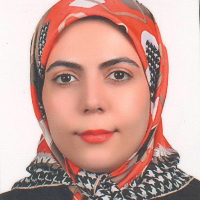Tips on the Relationship between the Headlines and the Structure of the Story in the Shahnameh and Suggestions for More Systematic Selection
The headlines of the Shahnameh are phrases placed between the verses and mention the important events that occur in the continuation of the story. In addition, headlines have a variety of functions, the most important of which is to identify parts of the story and storylines. When a reader reads a long story text, he or she becomes more aware of the need for titles that define the storyline. By removing such phrases from the stories of the Shahnameh, a part of Ferdowsi's art in organizing descriptions is also neglected. Since titles, like verses, do not have the capacity to contain stylistic and artistic features, correctors are mainly content with what is recorded in the manuscripts in choosing the correct form. This method of selection creates problems because it is one-dimensional. However, the structure of the story and the title are related to each other, and more accurate recordings can be made by knowing the structure and elements of the story affecting the titles. This approach to the text and the headline provides helpful elements to the corrector and can be used to make better choices. In this article, considering the structure of the story and the connection it has with the titles, we have provided solutions for more systematic selection. In addition, during text editing, the location of each headline is as important as the recording. Considering the structure and content of the verses of the Shahnameh, we have also mentioned the exact location of these phrases and have provided suggestions for organizing the correction of the title with the approach of paying attention to the construction of the story.Introduction In the manuscripts of the Shahnameh, among the verses, prose phrases can be found that inform the reader about the parts of the story and the subsequent events. In correcting the text, one should pay attention to these headings as verses and choose the most appropriate form from the forms registered in the manuscripts. This choice, of course, is more difficult than choosing the exact form of the verses. Such difficulty is due to several factors. First, in selecting additional verses of information that the knowledge of text correction and typography provides to the corrector, it is possible to use stylistics and related matters such as grammar, rhetoric, etc. But in choosing the title, one cannot use stylistic criteria. Second, correctors made changes to the titles. These changes were sometimes in imitation of the version they had, and sometimes according to the taste of the correctors. Third, the variety of recordings in the headlines is much greater than the verses and narrations. Fourth, the scaling method in the copies affects the increase in the number and length of the headlines as well as their addition or omission.Materials and Methods The sources used in this research are a number of manuscripts of the Shahnameh and some side sources. First, the position, number, and recording quality of the titles were examined, and then the characteristics of the titles of each version were recorded. In the next step, points about the relationship between the structure and components of the story and the titles were extracted from the manuscripts. Some points were identified related to the structure of the Shahnameh stories, with the help of which the titles can be selected more accurately.Discussion of Results and ConclusionsIt seems more difficult for the correctors to choose the correct form of the Shahnameh titles from the verses of this work. It is not possible to use stylistic criteria in choosing the appropriate form of these expressions. For this reason, correctors have been content with the content recorded in the manuscripts. However, the headlines are directly related to the two pillars of the narrative of the story, namely the event and the character, and by considering the importance of these two elements, it is possible to determine the more orderly form of the headlines. In choosing the appropriate form of headlines from the forms registered in the manuscripts, paying attention to the importance of the event and the character can be a more accurate selection guide. How the titles are recorded in the old and valid versions of the Shahnameh could confirm this claim. In addition, some events have always been influential in the course of the story, and in each story that is mentioned, they have a title in most versions. These events are related to wars and letters.In addition to determining the correct form of the title, it is also important to determine the appropriate location. To determine the appropriate location due to the special way of drawing the title boxes in the manuscripts and writing the verses around this box, an auxiliary method should be used. This helps to pay attention to important events such as letters and wars. According to the versions of the Shahnameh, especially its ancient versions, the headline must be written at the beginning of such important events. In addition to these types of events, if an event is to be a turning point in the story, the headline must be given before the verses begin. Ferdowsi uses this type of introduction at the beginning of important events in the heart of the story, just as he uses the principle of initiation in the beginning and sermon of the stories. Whenever a fateful event in the story is about to take place, Ferdowsi begins it with an allegorical statement. In addition to the rhetorical value, this method can determine the appropriate location of the headlines (i.e. before this introduction).
-
Dimensions and how the additional verses of the Shahnameh affect several images from the Baisonghori version
Niloofar Sadat Abdollahi *
Journal of Codicology and manuscript research, -
A descriptive study of ethics education in Ferdowsi Shahnameh based on Bozorgmehr assemblies
Nilofar Sadatabdolahi
Journal of Persian Language and Literature,



